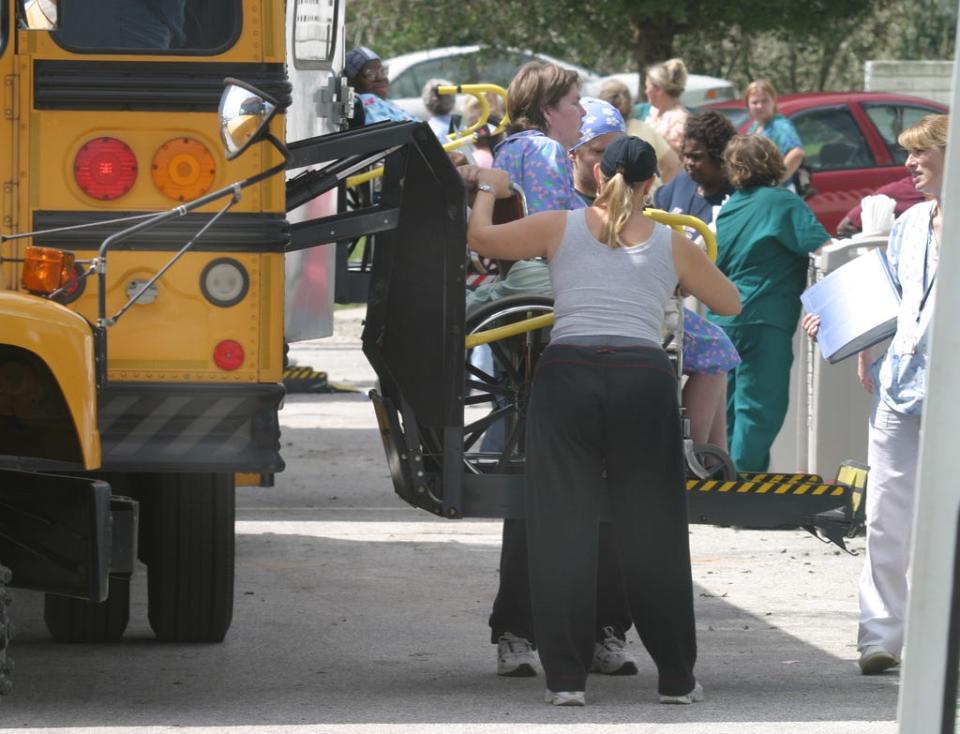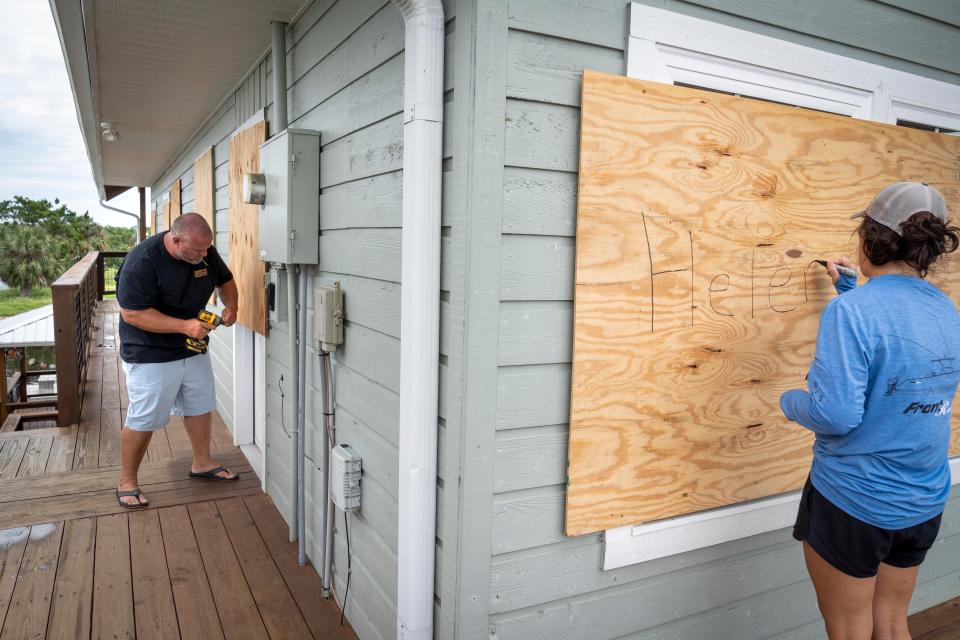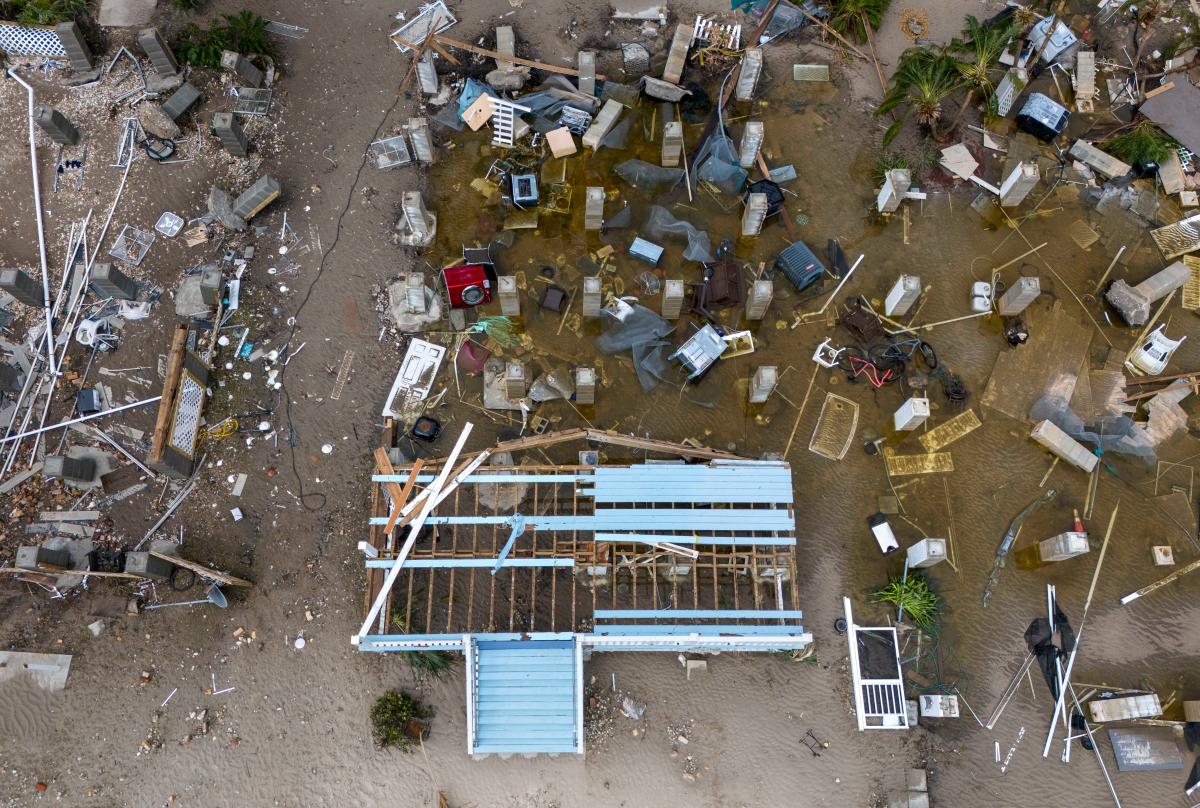This story has been updated to include new information.
The state heading back into “hurricane mode” as it braces for another powerful hurricane later this week, a week after being demolished by Hurricane Helene.
Hurricane Milton is heading towards Florida as a Category 3, its estimated landfall around the Tampa and Sarasota region; however, its path is still unclear.
The storm is predicted to hit as a Category 4. Officials warn residents of severe storm surge, power outages and winds ahead of Hurricane Milton.
During a Monday morning news conferences, Florida Emergency Management Director Kevin Guthrie told residents to complete their storm preparations today. For those planning to evacuate, he also advises those to do it today.
“I highly recommend that anybody has the means to do so … you have the capability to go to a hotel, stay with friends and family, get on the road today, wherever that might be,” Guthrie said when announcing evacuations orders will be going out soon. “
Where is Hurricane Milton right new? See where storm is expected to hit
Embed code:
Hurricane Milton currently is in the Gulf of Mexico and is moving toward Florida’s West Coast, forecasters putting its landfall anywhere between Wednesday afternoon and Thursday morning. It has been classified as a Category 4 as of Monday morning, sustaining wind speed of 150 mph.
A Category 5 hurricane has winds of 157 mph.
Where’s Jim Cantore? Weather Channel’s hurricane harbinger shares destination ahead of Milton
For along the Gulf Coast thinking about evacuating ahead of Milton’s landfall, here’s what you should know before heading out.
Know the difference between a hurricane ‘watch’ and ‘warning’
Ahead of the hurricane season, residents should be aware that there are not one, but two kinds of hurricane alerts and they identify how much time there is before the storm hits:
-
A hurricane watch means hurricane conditions (sustained winds of 74 mph or higher) are possible. Experts announce hurricane watches 48 hours before they expect tropical storm-force winds (sustained winds of 39 to 73 mph) to start.
-
A hurricane warning is more serious. It means hurricane-force winds are expected in a stated area. Experts issue these warnings 36 hours before tropical storm-force winds are expected in the area to give people enough time to prepare for the storm.
Here’s the current warnings as of Monday, Oct. 7:
Hurricane watch:
Storm surge watch:
Tropical storm watch:
-
Florida Gulf coast from Flamingo to south of Chokoloskee
-
Florida Gulf coast north of the mouth of the Suwanee River to Indian Pass
-
Lower, Middle, and Upper Florida Keys, including Florida Bay
What Florida counties are under a state of emergency?
Gov. Ron DeSantis has declared a state of emergency for 54 Florida counties ahead of Hurricane Milton:
Alachua, Baker, Bradford, Brevard, Broward, Charlotte, Citrus, Clay, Collier, Columbia, DeSoto, Dixie, Duval, Flagler, Gilchrist, Glades, Hamilton, Hardee, Hendry, Hernando, Highlands, Hillsborough, Indian River, Lafayette, Lake, Lee, Levy, Madison, Manatee, Marion, Martin, Miami-Dade, Monroe, Nassau, Okeechobee, Orange, Osceola, Palm Beach, Pasco, Pinellas, Polk, Putnam, Sarasota, Seminole, St. Johns, St. Lucie Sumter, Suwanee, Taylor, Union, and Volusia.
What does that mean? Gov. DeSantis declared state of emergency for Hurricane Milton
Perform an insurance checkup
The National Weather Service suggests reviewing your insurance policies ahead of time to make sure that they have adequate coverage for your home and personal property.
Create an evacuation plan ahead of time

Before a storm becomes emergent, sit down with your family or close friends to come up with an evacuation plan. Experts at FEMA recommend figuring out how you will get in contact with each other, where you will go, and what you will do in an emergency.
Once you have decided what will work best, keep a copy of this plan in your emergency supplies kit or another safe place where you can access it in the event of a disaster.
Find your local evacuation zone
County-wide evacuation routes and zone maps are based on the most up-to-date regional evacuation studies and are intended for general reference by the Florida Department of Emergency Management. To locate the nearest shelter and different routes you can take to get there from their home, residents can visit their county’s website or visit FloridaDisaster.org.
For pet owners, keep in mind that not every shelter is pet friendly. You’ll need to bring food and pet supplies, including proof of vaccination and a leash or travel crate.
For more information or to contact your local emergency management offices, here are the Emergency Management Program by country and Emergency Management Program Managers throughout Florida:
-
Jim Roberts’ Office (850) 519-8636, Pensacola and western Panhandle
-
Willie Bouie’s Office (850) 519-1469, Tallahassee and central Panhandle
-
Glen Hammers’ Office (850) 591-9947, Gainesville and eastern Big Bend
-
James Carter’s Office (850) 815-5767, Jacksonville and Northeast Florida
-
Austin Beeghly’s Office (850) 559-7459, Orlando area and East Central Florida
-
Paul Siddall’s Office (850) 519-8633, Tampa Bay north to Citrus County
-
Cristian Rivera’s Office (850) 273-2707, Polk and central counties to the south
-
Vacant office (850) 759-6226, Indian River to Palm Beach coastal counties
-
Theresa Hendry’s Office (850) 273-3845, Southwest, and west of Lake Okeechobee
-
Claudia Baker’s Office (850) 519-6734, South Florida and the Florida Keys
Gather emergency supplies
According to FEMA’s public service campaign website Ready.gov, a basic emergency supply kit could include the following recommended items:
-
Water (one gallon per person per day for several days, for drinking and sanitation)
-
Food (at least a several-day supply of non-perishable food)
-
Important documents, including medical documents, wills, passports, and personal identification)
-
Battery-powered or hand crank radio and an NOAA Weather Radio with tone alert
-
Flashlight
-
First aid kit
-
Extra batteries
-
Whistle (to signal for help)
-
Dust mask (to help filter contaminated air)
-
Plastic sheeting and duct tape (to shelter in place)
-
Moist towelettes, garbage bags, and plastic ties (for personal sanitation)
-
Wrench or pliers (to turn off utilities)
-
Manual can opener (for food)
-
Local maps
-
Cell phone with chargers and a backup battery
Along with physical supplies, write down emergency phone numbers and addresses for safekeeping in your emergency kit.
Get your home hurricane ready before you go


Clear your yard ahead of time, making sure there’s nothing that could blow around during the storm and damage your home. Move items, such as bikes, lawn furniture, grills, propane tanks, and building material, inside or under a shelter. You can use sandbags if need be to help secure furniture and keep out potential floodwater.
Residents also want to cover up any windows and doors. You can use storm shutters or nail pieces of plywood to the outside window frames to protect your windows. This can also help keep you safe from pieces of shattered glass.
You should also move possessions to your highest floor for the best chance at keeping them safe. Photograph your property for insurance purposes.
In case you lose your water supply while you’re gone, fill up clean water containers with drinking water. You can also fill up your sinks and bathtubs with water for washing.
Turn off the power and water lines
If you have time while you’re evacuating, turn off the gas, electricity, and water. To turn off the power, find your circuit breaker panel and set the main circuit switch to off.
To cut off the main water valve, walk around the perimeter of your house and you’ll see a water meter mounted on the side of the house, then the water main valve below it, connected by a pipe. You might need to use a wrench to successfully turn the valve clockwise to shut off the water supply to your house.
Experts also advise unplugging any appliances as well in case of a power surge.
Get your car ready for evacuation
Ready.gov’s experts stress the importance of having an emergency kit in your car as well as your home, complete with jumper cables, maps, and extra blankets. Once you’re actually evacuating, you can grab your other emergency supply kit and only take what you really need with you, such as cell phones, chargers, medicines, and identification.
They also encourage having a mechanic check out your car before an emergency. They highlight the following tips to make sure your car is in good shape ahead of evacuations:
-
Keep your gas tank full in case of evacuation or power outages. A full tank will also keep the fuel line from freezing.
-
Install good winter tires and make sure they have enough tread or any chains or studs required in your local area.
-
Do not drive through flooded areas. Six inches of water can cause a vehicle to lose control or possibly stall. A foot of water will float many cars.
-
Be aware of areas where floodwaters have receded. Roads may have weakened and could collapse under the weight of a car.
-
If a power line falls on your car you are at risk of electrical shock. Stay inside until a trained person removes the wire.
-
If it becomes hard to control the car, pull over, stop the car, and set the parking brake.
-
If the emergency could affect the stability of the roadway avoid overpasses, bridges, power lines, signs, and other hazards.
Check-in and offer assistance to neighbors who might need it
Before you finally head and make your way on your evacuation route, check in on any elderly or disabled neighbors who might need extra assistance before a storm hits. See if anyone needs a ride or extra supplies.
Contributing: Cheryl McCloud, USA TODAY NETWORK – Florida
This article originally appeared on Fort Myers News-Press: Hurricane Milton before landfall: What to know if you evacuate state















